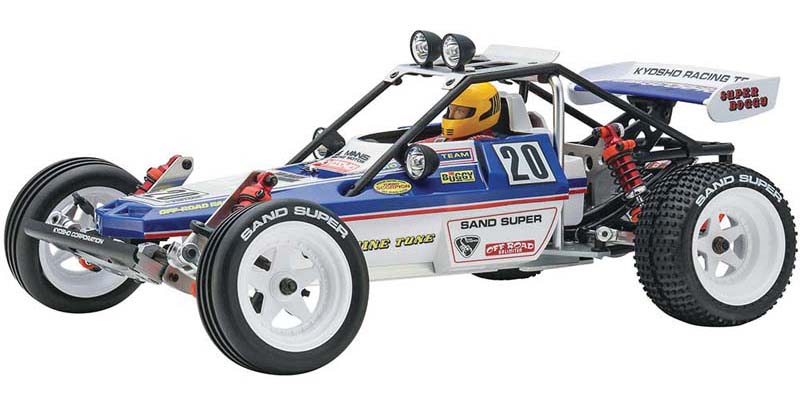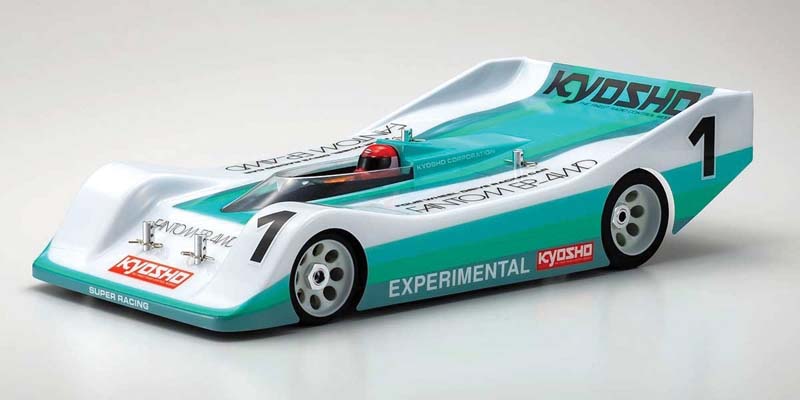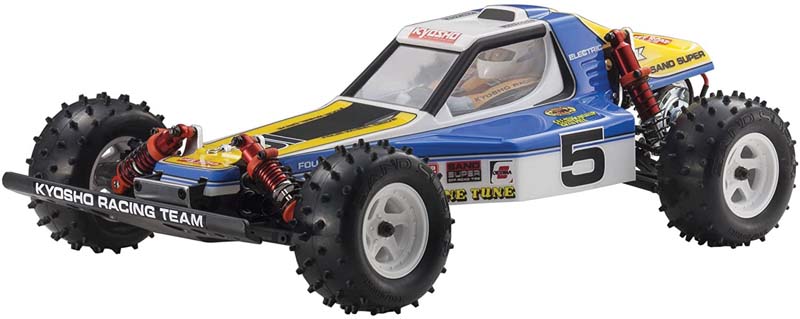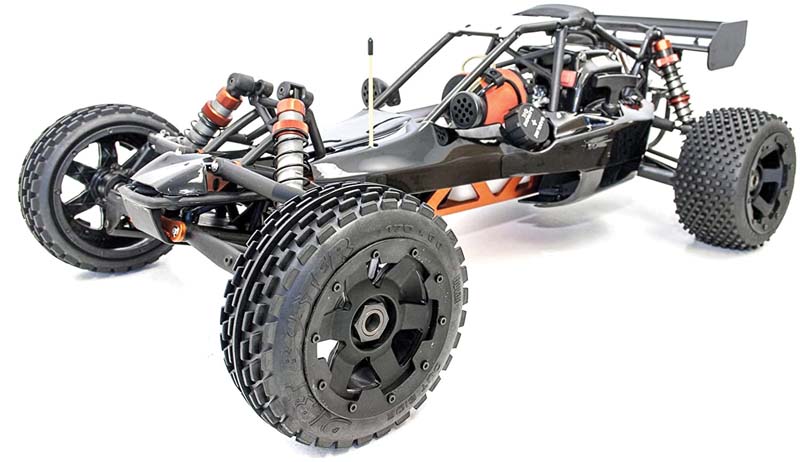It’s an honor and privilege for us to sit down with famed RC designer Akira Kogawa for our RCCA Q&A session. The prolific RC designer is responsible for many of the designs and breakthroughs that you see on the track today. Impressively, he began creating RC cars professionally at the ripe age of 18 and hasn’t looked back since.
Kogawa has since launched the iconic Kyosho Optima linage of buggies, HPI’s famed Baja 5B and many, many more RC favorites. Let’s learn more about how he got his start, hid favorite RC cars and what he enjoys most about the RC hobby. Kogawa also shares a few great RC tips that all of us can benefit from knowing.

RCCA: For those who might not know what you’ve designed, can you tell us about some of your more groundbreaking models?
AK: My first design was released back in 1981, which was the Kyosho Blizzard. From there, I designed cars like the Fantom EP 4WD on road pan car and Scorpion, which helped make 1/10 off road racing widely popular. I also designed the 1/8th Off Road Kyosho Burns back in 1987, which is now popular in the mainstream. In the 90’s it was the HPI RS4 PRO2, which is many of today’s 1/10 EP touring cars are based on. I also designed the HPI 1/5th Baja 5B, which showed the possibility of gas, powered off road racers.
RCCA: Tell us about how you get started in the RC hobby?
AK: I started this hobby when I was 13 years old playing with RC gas boats and moved onto 1/8th on-road gas racing when I was 16. Since I was only a high school student, I had to do odd jobs such as being a paperboy and gas station attendant part-time in order to earn money for RC.

RCCA: What was your first RC vehicle?
AK: I made a 1/12th scale scratch built chassis when I was 12. I cutout aluminum for the chassis and used a brass sheet for the steering area. The gearbox was made from a Tamiya Craft Kit series and I took the tires from a Tamiya F1 plastic models.
RCCA: How and when did you come to start designing RC cars professionally?
AK: I started RC designing at Automodel after graduating a technical high school when I was 18 years old. The work there triggered me to work for Automodel/Kyosho when I met the senior 1/8th on-road car designer, Yuji Taki, at one of the race events at the time.
RCCA: What are your thoughts on competition RC vs. casual RC?
AK: I like all categories from competition racing to fun cars in all sizes. The price of entry in RC was much cheaper and there was no difference between racecars and fun cars back in the 80s. The increased cost in maintaining the racing category has gone up in recent times, which has made it harder for individual racers and entire companies to keep up financially. I am currently mostly attracted to fun RC cars because more RC enthusiasts seem to be happier just having fun with them. From a manufacturer’s standpoint, they also sell better so it’s a win-win situation.
RCCA: What types of RC do you enjoy the most personally?
AK: My favorites are RC cars that are fun to drive make you want to drive again. I like on and off road cars that are easy to control in an open field or at a technical racetrack. I really enjoy running our vintage cars with my friends with slower motors at moderate speeds just like in the good old days of RC off roading. The most interesting car to drive would be 1/8th on road racing. I can’t think of any other motorsport where you turn with your throttle while your nitro engine is sounding nice at 40K RPM. The scale crawler world has been the global trend over the last decade. I was surprised to learn that doing the opposite of what we are use to, which are heavier RCs moving slowly up the mountains got to be that popular. The appeal of this category is that it also comes with dealing with true to scale details, which is also fun. I also enjoy running 1/5th off road with paddle tires through the dessert!

RCCA: Which are your favorite RC vehicles?
AK: Ones that look cool and are fun to drive! 1) I’d say the HPI Baja 5B. It makes it fun when you could clearly see how the car is behaving due to its large size and it’s true to scale pipe frame looks cool too. 2) The Vaterra Ascender has an adjustable wheelbase and adjustable width. Its battery weight gets directly transferred to the front axles and combined with a short wheelbase; it makes it easy to mount many bodies that are out on the market. 3) Kyosho’s re-release Turbo Scorpion. Durable and capable to set up to any surface with various set up capabilities, which makes it fun to drive and its scale buggy looks make it cool too. 4) Kyosho 1/12 Fantom 4WD. With a one-way system similar to that of 1/8th on road cars allow you to go on the throttle and pleasantly accelerate out of low traction turns.
RCCA: What are two upgrades you would recommend for any RC?
AK: One is definitely tires. Tires allow you to choose the grip characteristics that you want. Second is the steering servo, especially for RTR’s. You can better proportionally control handling to your liking when using quality high speed/torque servos.
RCCA: Do you have any other RC tips for our readers?
AK: The first thing you want to check on an RC car is its steering area. Check the smoothness of the assembly by moving it after taking off the servo horn. Make sure there is no binding or sticky spots. Also understand how to treat LiPo batteries. They have high output and capacity that could cause fire or even an explosion if you treat them wrong. Please pay extra attention to them.

RCCA: What future projects can you tell us about?
AK: I have been focusing on designing a car that is nice looking that handles well that you want to go out and drive again! I want to focus on product design that is priced appropriately too. There are a lot of projects to consider, but I would like to design something that goes both land and water!
Text by Jerry Tsai & Leigh Guarnieri
Images provided by Kyosho
The post Q&A With Kyosho’s famed designer Akira Kogawa appeared first on RC Car Action.
